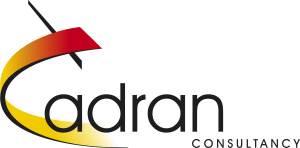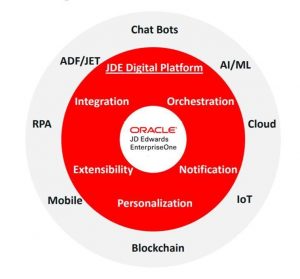
The necessity of choosing an open ERP
While selecting a Enterprise Resource Planning system, often one looks predominantly at the present requirements. These requirements are driven by the experience of previous years, or even the current desires from a business. In recent years the speed of business has significantly sped up. Automation has been a major cause in this. This however means as well that changing an existing ERP system has become increasingly difficult in the implementation and the pressure even higher. This is only going to increase.
Systems of Record vs Systems of Innovation: Does it still apply?
Looking at this challenge from afar, wouldn’t it be great if you could address your business applications like a child would look at Lego? You’ve got a great set of building blocks, many with special properties. To a large extend they are the same, but it is in the way you configure them together that determine their use. SaaS applications claim to be the solution to this. To business with a very distinct business process this becomes a challenge. Many SaaS applications assume that you will adjust to the SAAS application: it’s the same for everyone and therefore customizing the application would defeat the purpose. In addition, going for a specific SaaS application would still force you to buy very big lego blocks, whereas you would actually prefer to have them in such small portions that you can fit them together the way you would like.
At the same time, companies cannot risk a lack in functionality or configurability in its core processes. In this respect Gartner’s distinction of systems of record and systems of innovation still applies: the systems of record need to be secure, reliable and integer. To put it in practical terms, a company would gladly try to innovate in its forecasting capabilities, but the core financial registration needs to be reliable; one would consider innovating with e-commerce, but the core registration of sales and workorders needs the be reliable and secure. Next to this one needs to consider what innovation means for a company. To some companies starting to automate or even registering their system maintenance is a big innovation already, whereas other companies are looking to innovate in this area by means of internet of things. They are on different points on the curve, with different aspects of their business process.
In this remark, wouldn’t it therefore be great to have a proven, reliable ERP that you would be able to connect and improve over time. Depending on the direction of the business and business needs, one would want to invest only in the components that apply to their context and would want to be able to connect this to their existing landscape. This was the premise of a service oriented architecture: one would be able to connect all new applications to services to a service bus which would allow for seamless integration. Seeing this being executed fully is hardly ever seen. This brings problems in further upgrades to any system, and intensifies the costs of migration.
The Open ERP: JD Edwards
Many businesses are therefore looking at a system that has all the experience of their most weathered employees, while they are flexible and learning like someone fresh out of university. They would not want to throw away the child with the bathwater, and hence they either remain stuck in their existing situation or find a lack to innovate. JD Edwards therefore has changed its direction. The architecture of JD Edwards is such that it is both uniquely configurable, but at the same time allows for easy upgrades. Its architecture allows for integration with outside applications both SaaS and on premise alike. One could therefore do finance in JD Edwards, but do planning and budgeting in Oracle Finance Cloud. More importantly, one can now easily orchestrate processes and actions both inside and outside of JD Edwards. This allows for elaborate integrations. From a chatbot to internet of things, one can orchestrate these actions without having to customize the core of the application. With new functionalities still to be added, one therefore has the best of both worlds with JD Edwards: an ERP system that has been implemented with and now relied upon by over 6000 companies worldwide, while allowing for innovations of bespoke applications alike. JD Edwards allows for a reliable and configurable core, with the ability to connect it to any platform. This allows you to optimize and modernize your system continuously, for decades to come.



